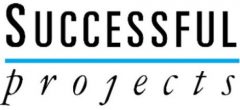Building a better what?
The WBS – work breakdown structure is an incredibly powerful tool in the Project Manager’s Toolkit. But, what the heck is it? In a nutshell, it is the foundation of the project plan. Creating a work breakdown structure (WBS) helps you consider both the details and the big picture when planning a project. Keep the following tips in mind to help you build a better WBS.
Structure is not a statement. The work breakdown structure is often confused with scope statement. Both come early in a project’s lifecycle. WBS is an outline of work to be done and is a component of the scope statement.
Exclude the Distractions and Details. A well-crafted WBS includes all of the work needed to complete the project and purposefully excludes all the anticipated, but unnecessary, diversions and distractions that would slow it down. Don’t include technical specifications or work instructions inside the WBS. Don’t try to write the WBS using full sentences.
Know the two key terms. There are summary tasks and work packages in a WBS. Summary tasks are just there for organizational purposes. The work packages are where the actual work resides. Work packages get estimated and delegated. Summary tasks do NOT get estimated and delegated.
Beware the stand-alone work package. A summary task with just one work package under it is a huge red flag that your WBS work is incomplete.
Think deliverables. A WBS specifies the major and subordinate deliverables so it is best to write it in terms of nouns as opposed to actions. Remember that approvals are a deliverable.
Decompose to the level of delegation and to where you can accurately estimate. Make sure that each WBS element has someone who is clearly accountable for its completion. Decompose that deliverable to the point where the time and cost can be accurately estimated.
Bigger projects demand longer legs. WBS levels increase when a project is large, complex and time-consuming. These increasingly more detailed levels are often referred to as “long legs.” Deliverables are pushed further into the future on long-legged projects.
A good WBS helps prevent project delay or failure. Omitting WBS development and proceeding directly to a Gantt chart or other network diagram may unnecessarily delay the project. Creating a WBS that is not deliverables-focused may lead to project failure.
Practice the art of progressive elaboration. Increase the “legs” of a WBS until a level is reached that provides the needed insight for effective project management. At that finite endpoint, one person is responsible for one independent element, and there are clear, objective criteria for measuring the element’s progress and completion.
Plan to Use your WBS. The WBS is where you would plan to do percent complete tracking. You may want to build in a method for this at the start. If you’re using project management software, that is done for you. However, if you are using something like Word or Excel, it might be helpful to add a column such as “assigned” and “% complete” immediately to help prepare for that.
I’d like to hear your feedback. Do you have any tips that you have found effective in building a better WBS? Do you use a WBS in your projects?

